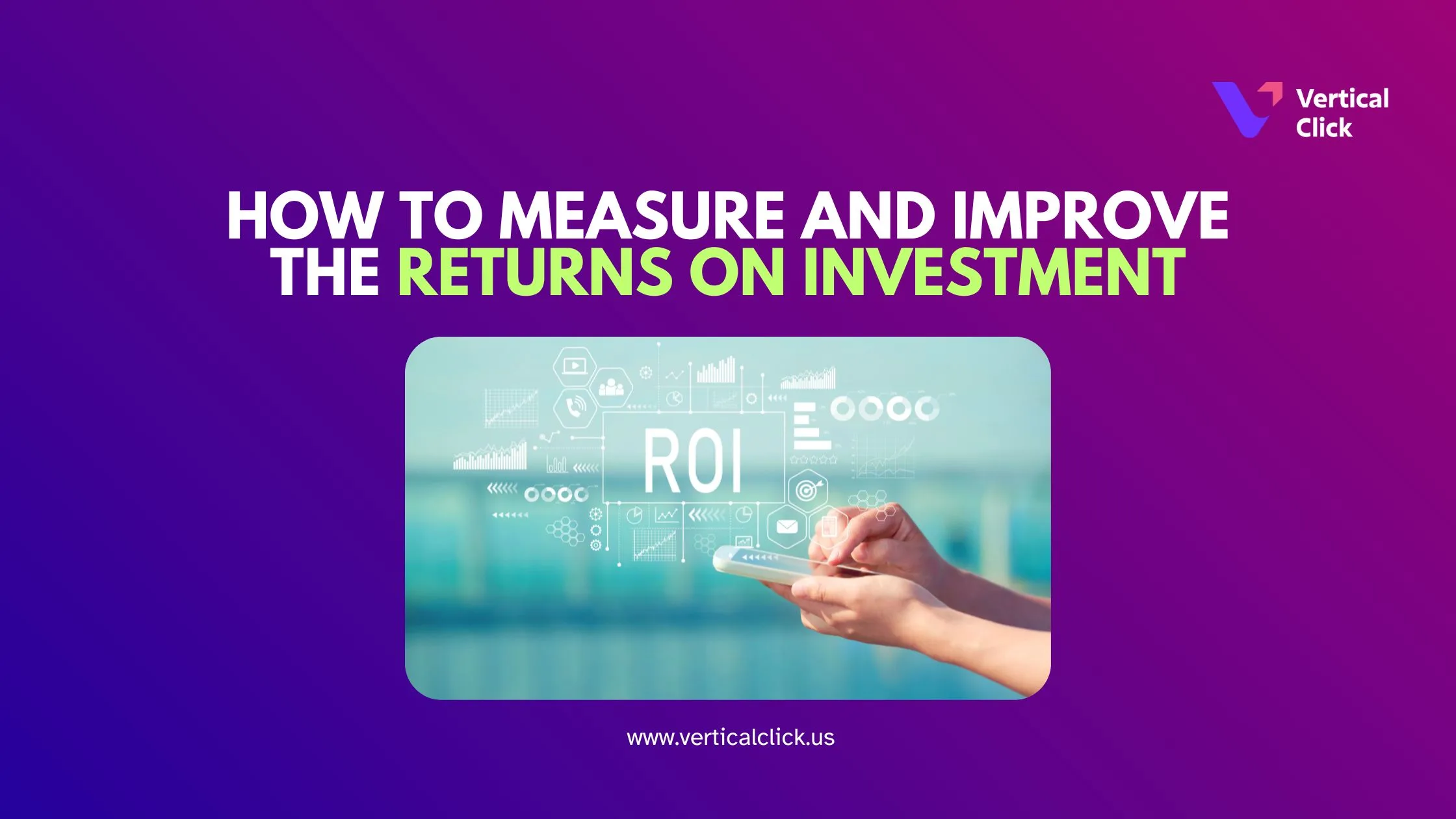Digital Marketing: How to Measure and Improve The Returns on Investment

A digital marketing system is data-oriented, and businesses cannot afford to invest indiscriminately anymore. All dollars spent in digital marketing must follow with results that will influence a change. This is why measuring and optimizing the digital marketing return on investment (ROI) becomes supreme.
What is digital marketing ROI?
It is the proportion of net profit that arose from their digital marketing costs. It tells you whether you are earning an amount worth your time and investment from your marketing activities. Generally, it is denoted in percentage.
ROI (%) = [(Revenue – Cost of Marketing) / Cost of Marketing] x 100.
Measuring Digital Marketing ROI
1. Set Clear Goals
Achieving some clear, quantified objective is really crucial. Are you after more leads, web traffic, app downloads, or online sales? Your objectives will drive what KPIs you measure.
2. Track the Right Metrics
Depending on your goals, the following key metrics may apply:
- Traffic Sources (organic, paid, referral, direct)
- Conversion Rate
- Customer Acquisition Cost (CAC)
- Customer Lifetime Value (CLTV)
- Cost Per Lead (CPL)
- Return on Ad Spend (ROAS)
3. Use the Right Tools
- Get your data from:
- Digital analytics tools to gather data:
- Google Analytics—website traffic and user behavior
- Google Ads/Facebook Ads Manager—campaign performance
- CRM tools—lead and customer tracking
- Marketing Automation Platforms—email, nurture, and funnel tracking
4. Attributing Conversions Correctly
You should use attribution models (first-touch, last-touch, and multi-touch) to analyze which channel and which campaign contributed best to conversion.
5. Calculate ROI
Aggregate the costs of the campaigns against revenue. The ROI formula will give you a clear picture of how each campaign does.
How to Improve Your Digital Marketing ROI
1. Optimize Campaign Targeting
Refine your audience targeting using demographic, behavioral, and engagement data. Better targeting results in better conversion rates and lower costs.
2. A/B Test Everything
Components such as ads, emails, landing pages, and CTAs should be tested on several versions. Find out what works on your target audience and optimize according to that insight.
3. Concentrate on High-Return-on-Investment Channels
Focus energy on high-ROI channels and tactics, and for the underperformers, revise or eliminate them.
4. Standout Lead Nurturing
Enhance the conversion of prospects down the funnel reliably through email marketing, retargeting, and personalized content.
5. Improve User Experience
Speed, mobile-friendliness, easy navigation, and acceptable CTAs will improve conversions and decrease bounces.
6. Get Into Automation and Scale
Automation diminishes manual effort while ensuring leads and customers receive uninterrupted communications. In turn, this translates to lower acquisition costs.
Conclusion
Measuring and improving digital marketing ROI is a never-ending process-it’s about testing, learning, and optimizing. When strategy applies to the metrics, marketers can always take the right tool to refine their campaign to transform digital investment into measurable growth.